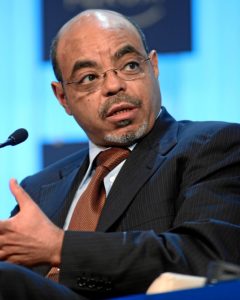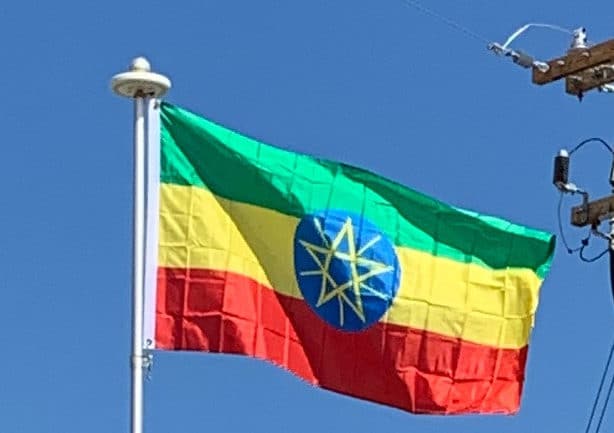The 1983–85 famine in Ethiopia affected around eight million people, resulting in one million dead. Insurrections against Communist rule sprang up, particularly in the northern regions of Eritrea and Tigray. The Tigrayan People’s Liberation Front (TPLF) merged with other ethnically-based opposition movements in 1989, to form the coalition known as the Ethiopian People’s Revolutionary Democratic Front (EPRDF).
Concurrently, the Soviet Union began to retreat from building world communism under Mikhail Gorbachev’s glasnost and perestroika policies, marking a dramatic reduction in aid to Ethiopia from Socialist Bloc countries. This resulted in more economic hardship and the collapse of the military in the face of determined onslaughts by guerrilla forces in the north. The collapse of Marxism–Leninism in general, and in eastern Europe during the revolutions of 1989, coincided with the Soviet Union stopping aid to Ethiopia altogether in 1990. The strategic outlook for Mengistu quickly deteriorated.

EPRDF forces advanced on Addis Ababa in May 1991, and the Soviet Union did not intervene to save the government side. Mengistu fled the country and was granted asylum in Zimbabwe, where he still resides.
In 2006, after a trial that lasted 12 years, Ethiopia’s Federal High Court in Addis Ababa found Mengistu guilty of genocide in absentia. Numerous other top leaders of his government were also found guilty of war crimes. Mengistu and others who had fled the country were tried and sentenced in absentia. Numerous former officials received the death sentence and tens of others spent the next 20 years in jail, before being pardoned from life sentences.
In July 1991, EPRDF convened a National Conference to establish the Transitional Government of Ethiopia composed of an 87-member Council of Representatives and guided by a national charter that functioned as a transitional constitution. In June 1992, the Oromo Liberation Front withdrew from the government; in March 1993, members of the Southern Ethiopia Peoples’ Democratic Coalition also left the government. In 1994, a new constitution was written that established a parliamentary republic with a bicameral legislature and a judicial system.
Federal Democratic Republic (1991–present):
The first multiparty election took place in May 1995, which was won by the EPRDF. The president of the transitional government, EPRDF leader Meles Zenawi, became the first Prime Minister of the Federal Democratic Republic of Ethiopia, and Negasso Gidada was elected its President.

In May 1998, a border dispute with Eritrea led to the Eritrean–Ethiopian War, which lasted until June 2000 and cost both countries an estimated $1 million a day. This had a negative effect on Ethiopia’s economy, but strengthened the ruling coalition.
Ethiopia’s 3rd multiparty election on 15 May 2005 was highly disputed, with some opposition groups claiming fraud. Though the Carter Center approved the pre-election conditions, it expressed its dissatisfaction with post-election events. European Union election observers cited state support for the EPRDF campaign, as well as irregularities in ballot counting and results publishing. The opposition parties gained more than 200 parliamentary seats, compared with just 12 in the 2000 elections. While most of the opposition representatives joined the parliament, some leaders of the CUD party who refused to take up their parliamentary seats were accused of inciting the post-election violence and were imprisoned. Amnesty International considered them “prisoners of conscience” and they were subsequently released.
